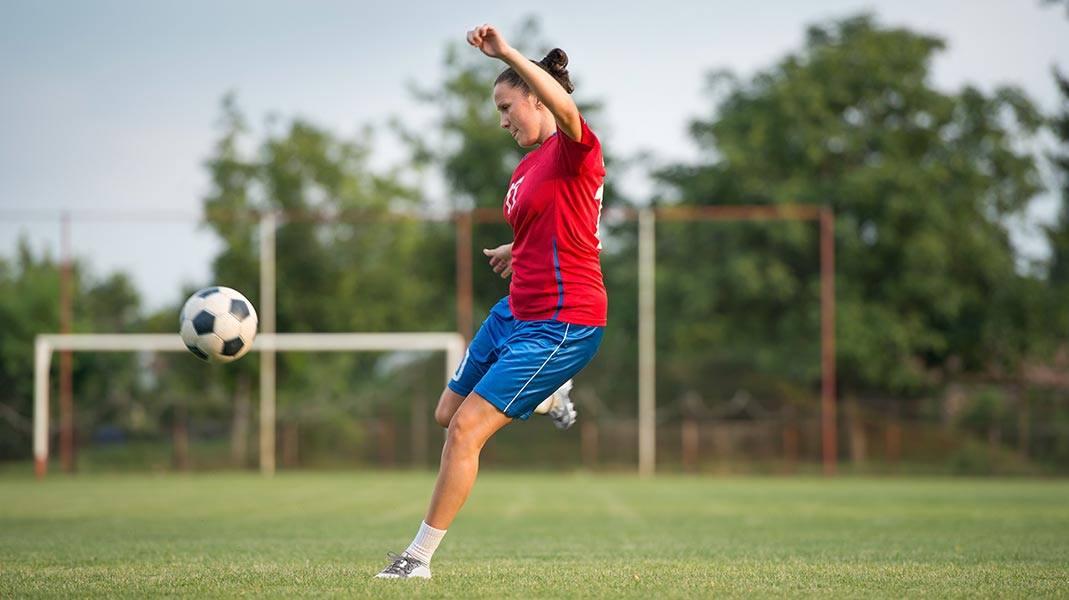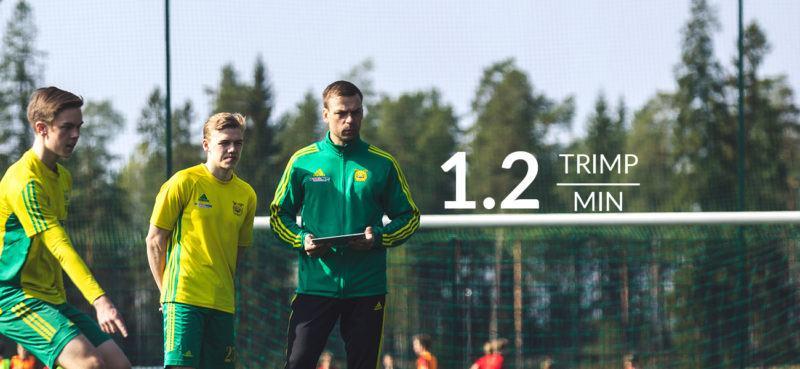
To say the University of South Carolina Women’s Soccer team has enjoyed a successful couple of seasons would be an understatement. The Gamecocks, led by 2016 SEC Coach of the Year Shelley Smith and her husband, Associate Head Coach Jamie Smith, have claimed back-to-back SEC regular season titles and reached the semi-final of the 2017 College Cup back in December.
Since 2015, the Women’s team have utilized Firstbeat Sports to help them prepare for a busy schedule that sees them play out-of-conference games, compete in the SEC division and, as in recent years, the SEC tournament and NCAA postseason. We caught up with assistant Strength & Conditioning coach Alex Buchman to discuss how using Firstbeat technology has helped assess player fitness, improve recovery and boost performances on the field.
“We just finished our third year with Firstbeat and it’s been tremendous,” Buchman explained. “Year 1 was more about collecting data, not making too many irrational decisions. Year 2 got here, and it was just like ‘wow’. The numbers started jumping out at me – I was able to group a lot of different components together.”

Assistant Strength & Conditioning coach Alex Buchman.
Communicating
Firstbeat Sports allows coaches to individualize training based on personal physiology, using heart rate variability analysis to produce measurable metrics such as TRIMP (Training Impulse) and Training Effect. Being able to track each player over an entire season – from preseason through to College Cup semi final – means Buchman can provide valuable feedback to his colleagues about the status of the roster.
“We talk after every session and go over the numbers. It’s important we establish a norm within the team and for each player, so we can properly plan out sessions. Having that data already solidified and understanding what we want to look at from a load standpoint has been really beneficial as I can better draw the picture out for the coaches,” he summarized.
Interested in hearing how TRIMP scores differ depending on positions in soccer? Listen to the Firstbeat Sports Podcast
And the ability to analyze the data in real time means coaches can make actionable decisions. For example, reducing a certain player’s training minutes, the length of specific team drills, or removing a player from the session early to reduce the risk of injury.
“The real-time is huge for me. During training, I’m down on the field with the team watching the Firstbeat dashboard and making notes about anything that stands out. I already know what drills we’re going to do ahead of time, so I can have an idea of ‘Hey, this is what it should look like’.”
Having a coaching staff that has fully bought into using data to help inform training loads means a seamless process from seeing a metric on the dashboard to adapting the session itself.
“At any point during the session our associate head coach may come up and say, ‘Hey, are we good? Do we need to run anything now?’ We have a constant communication like that.
Player Buy-in
It isn’t just the coaching staff who are kept in the loop regarding the numbers. Buchman has seen a positive response from players, too, when explaining certain decisions regarding their training. This is particularly useful during the season when, rather than reducing training intensity, training minutes may be curtailed after a particularly intense fixture.
“Ahead of time, I’ll send the coaches a list of players whose volume we may want to cut down. The players really buy into it as well.
“They want to feel like they can train as well as possible whilst avoiding something that is going to fatigue them. They understand the importance of really keeping that intensity and focus sharp but sometimes cutting back on some minutes.”
The Gamecocks staff are careful not to overload players with every metric they monitor. However, combining Firstbeat Sports data with their own daily wellness questionnaire, Buchman and his colleagues do use the analysis as a motivational tool to push for more from athletes when the data shows it is possible.
“It’s not like they’re slacking in training, but we can tell them ‘You can bump it up another notch and I think you’ll benefit from that in your playing’. ‘There’s another level you can reach in your training because I am seeing that consistently in your data’.
“We’ve used that as a positive way to motivate players. They’re like ‘I didn’t even realize that, and it makes a lot of sense’.”
Take Guessing out the Equation
Buchman believes that data analytics is becoming more common in Women’s collegiate soccer and, as the league becomes increasingly competitive, he only sees the impact increasing. For him, Firstbeat Sports has provided the tools needed to help retain that competitive edge.
“It takes guessing out of the equation. This past year, we made it to the program’s first College Cup and won back-to-back SEC Championships. Firstbeat Sports has been a good addition and it’s definitely been a big part of the puzzle for what we’re trying to do from a sports performance standpoint.”
If you liked this article, you should subscribe to our mailing list.
Give your team the Firstbeat Sports competitive advantage.
Contact us for more information or get a quote.
You might also be interested in

Real-time TRIMP/min: How to Use the Firstbeat Sports App Feature in Training
From replicating game intensity to aiding player rehab, monitoring TRIMP/min has wide-ranging benefits.

How Arsenal Manage Player Data to Achieve Peak Performance
Technology in sport is increasing at a rapid rate. Arsenal’s Tom Allen reveals how to pinpoint the key data and monitor players effectively during the season.

Using Data to Start Key Discussions With Your Athletes – With Jen Mavis, UMBC Soccer – Ep. 7
UMBC Women’s Soccer’s Assistant Coach talks about building trust between coach and athlete, preventing soft tissue injuries, the changing landscape of NCAA competition and coaching, + more

